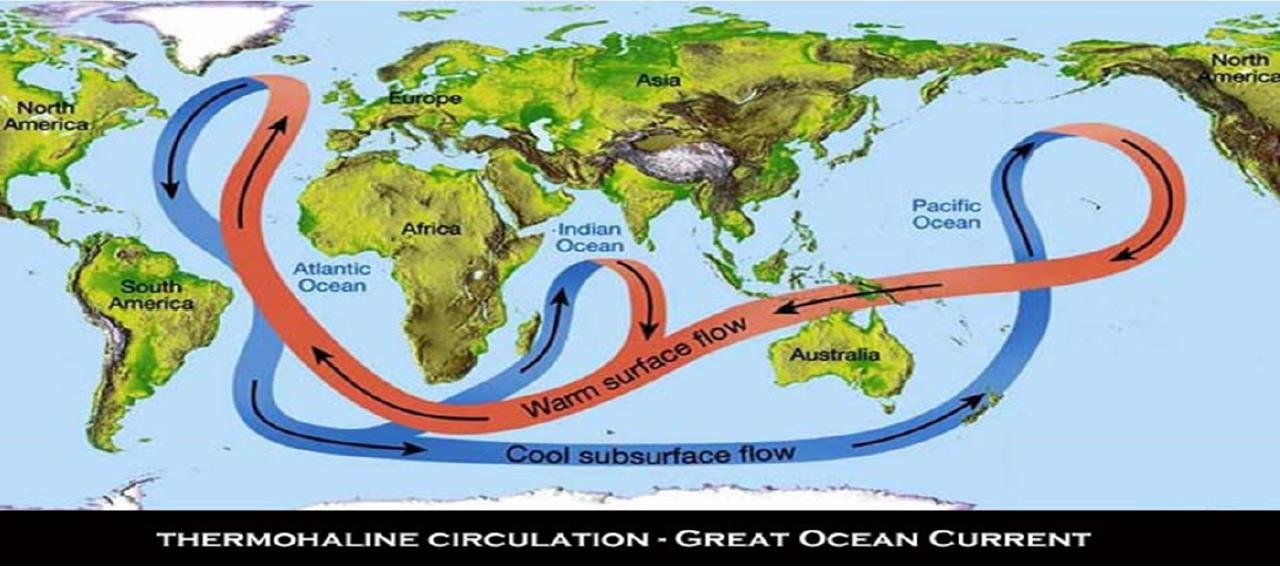Challenges to the CO2 Global Warming Hypothesis: (11) Global Warming Driven by Oceanic Seismic Activity, Not CO2
/Although undersea volcanic eruptions can’t cause global warming directly, as I discussed in a previous post, they can contribute indirectly by altering the deep-ocean thermohaline circulation. According to a recent lecture, submarine volcanic activity is currently intensifying the thermohaline circulation sufficiently to be the principal driver of global warming.
The lecture was delivered by Arthur Viterito, a renowned physical geographer and retired professor at the College of Southern Maryland. His provocative hypothesis links an upsurge in seismic activity at mid-ocean ridges to recent global warming, via a strengthening of the ocean conveyor belt that redistributes seawater and heat around the globe.
Viterito’s starting point is the observation that satellite measurements of global warming since 1979 show distinct step increases following major El Niño events in 1997-98 and 2014-16, as demonstrated in the following figure. The figure depicts the satellite-based global temperature of the lower atmosphere in degrees Celsius, as compiled by scientists at the University of Alabama in Huntsville; temperatures are annual averages and the zero baseline represents the mean tropospheric temperature from 1991 to 2020.
Viterito links these apparent jumps in warming to geothermal heat emitted by volcanoes and hydrothermal vents in the middle of the world’s ocean basins – heat that shows similar step increases over the same time period, as measured by seismic activity. The submarine volcanoes and hydrothermal vents lie along the earth’s mid-ocean ridges, which divide the major oceans roughly in half and are illustrated in the next figure. The different colors denote the geothermal heat output (in milliwatts per square meter), which is highest along the ridges.
The total mid-ocean seismic activity along the ridges is shown in the figure below, in which the global tropospheric temperature, graphed in the first figure above, is plotted in blue against the annual number of mid-ocean earthquakes (EQ) in orange. The best fit between the two sets of data occurs when the temperature readings are lagged by two years: that is, the 1979 temperature reading is paired with the 1977 seismic reading, and so on. As already mentioned, seismic activity since 1979 shows step increases similar to the temperature.
A regression analysis yields a correlation coefficient of 0.74 between seismic activity and the two-year lagged temperatures, which implies that mid-ocean geothermal heat accounts for 55% of current global warming, says Viterito. However, a correlation coefficient of 0.74 is not as high as some estimates of the correlation between rising CO2 and temperature.
In support of his hypothesis, Viterito states that multiple modeling studies have demonstrated how geothermal heating can significantly strengthen the thermohaline circulation, shown below. He then links the recently enhanced undersea seismic activity to global warming of the atmosphere by examining thermohaline heat transport to the North Atlantic-Arctic and western Pacific oceans.
In the Arctic, Viterito points to several phenomena that he believes are a direct result of a rapid intensification of North Atlantic currents which began around 1995 – the same year that mid-ocean seismic activity started to rise. The phenomena include the expansion of a phytoplankton bloom toward the North Pole due to incursion of North Atlantic currents into the Arctic; enhanced Arctic warming; a decline in Arctic sea ice; and rapid warming of the Subpolar Gyre, a circular current south of Greenland.
In the western Pacific, he cites the increase since 1993 in heat content of the Indo-Pacific Warm Pool near Indonesia; a deepening of the Indo-Pacific Warm Pool thermocline, which divides warmer surface water from cooler water below; strengthening of the Kuroshio Current near Japan; and recently enhanced El Niños.
But, while all these observations are accurate, they do not necessarily verify Viterito’s hypothesis that submarine earthquakes are driving current global warming. For instance, he cites as evidence the switch of the AMO (Atlantic Multidecadal Oscillation) to its positive or warm phase in 1995, when mid-ocean seismic activity began to increase. However, his assertion begs the question: Isn’t the present warm phase of the AMO just the same as the hundreds of warm cycles that preceded it?
In fact, perhaps the AMO warm phase has always been triggered by an upturn in mid-ocean earthquakes, and has nothing to do with global warming.
There are other weaknesses in Viterito’s argument too. One example is his association of the decline in Arctic sea ice, which also began around 1995, with the current warming surge. What he overlooks is that the sea ice extent stopped shrinking on average in 2007 or 2008, but warming has continued.
And while he dismisses CO2 as a global warming driver because the rising CO2 level doesn’t show the same step increases as the tropospheric temperature, a correlation coefficient between CO2 and temperature as high as 0.8 means that any CO2 contribution is not negligible.
It’s worth noting here that a strengthened thermohaline circulation is the exact opposite of the slowdown postulated by retired meteorologist William Kininmonth as the cause of global warming, a possibility I described in an earlier post in this Challenges series (#7). From an analysis of longwave radiation from greenhouse gases absorbed at the tropical surface, Kininmonth concluded that a slowdown in the thermohaline circulation is the only plausible explanation for warming of the tropical ocean.
Next: Foundations of Science Under Attack in U.S. K-12 Education








